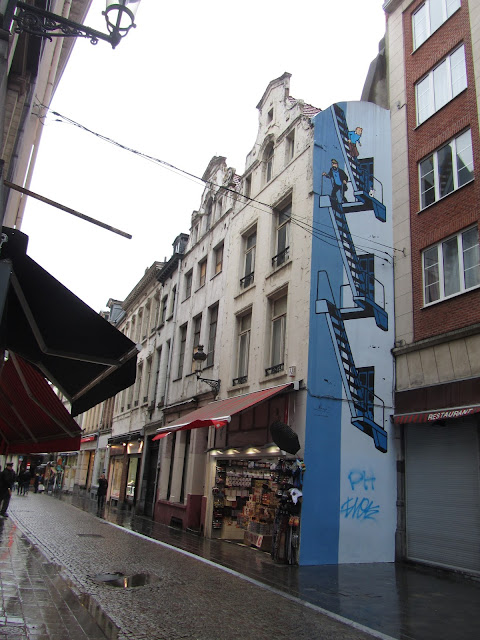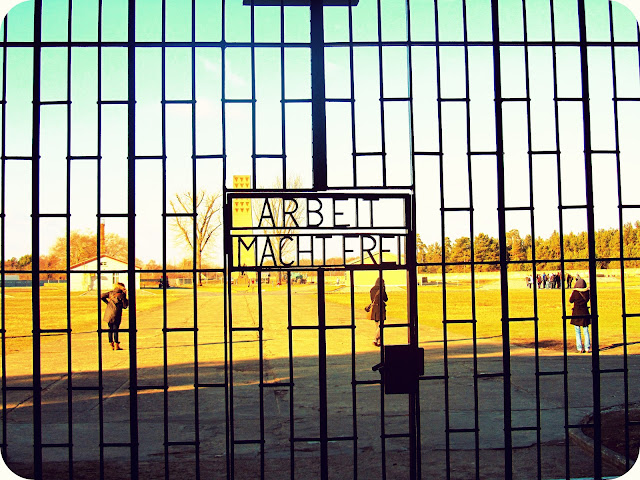What’s the first thing that comes to your mind when you
think of Belgium? Chocolate? Beer? Diamonds? These are of course some of the
most popular things the picture-perfect country is known for. While this post
isn’t an exhaustive list of must-do s in the country’s lovely capital, if you
have a day or two in Brussels, these are some things you can do.
Grand Platz and Grote
Markt – This is old historic town center, and was built as a merchant’s
market. With its stunning architecture and rows of shops, you can walk around
as much as you like and not get bored. Walk through the Galeries St. Hubert, an
arcade with a glass roof, which is home to several cafes, theaters and shops. Visit the Tintin Boutique if you're a fan of this boy-detective. Make sure you also visit the Grand Platz
after sun-down, it is really a special experience.
 |
| The Grand Platz |
 |
| Shops in Grote Markt |
Say Hello to the
little boy Manneken Pis – Located in one of the cobbled streets that make
up the Grote Markt, this bronze statue of a little boy peeing into a fountain
is one of the symbols of Brussels. There are several legends about this statue,
some of them being about war, and others being about a little boy who went
missing and then found. It’s an extremely touristy place, but you wouldn’t have
seen Brussels if you haven’t seen the Manneken Pis.
 |
| Manneken Pis |
Chocolate, anyone? Belgian chocolate is more than confectionary,
it is art, and it is created by some of the most talented masters in the world.
I am hardly a connoisseur, but I do know when chocolate is Belgian. And what’s
more – there is Belgian chocolate that tourists buy, and Belgian chocolate for
Belgians. Locals prefer handcrafted pieces of art from stores such as Pierre
Marcolini’s or Mary’s. Wittamer’s is a well known family owned chocolaterie
that you can visit. Mary’s is probably the jewel in Brussels’ chocolate crown,
and is the choice of the Royal family. The rows and rows of pralines, caramel,
marzipan and other heavenly goodies are a treat to all your senses.
If you’re interested, take the chocolate making course that
Mary’s offers to visitors at its workshop in the suburbs.
 |
| One clown who brings a smile to your face! |
Climb up the Atomium
– One of the iconic landmarks of Brussels, this structure was built in 1958
when Brussels hosted the World’s Fair. Built to look like a highly magnified
molecule of iron, it has escalators to take you up to the different spheres.
There is a restaurant in one of the spheres that you can try.
 |
| The Atomium |
Walk the Comic Book
Trail – Belgium is the place where many of our favorite comic book
characters were born including Herge’s Tintin. There is a comic book trail
where buildings are painted with popular characters, that you can walk, and you
can also visit the Comic Strip Museum to see some original artwork, and
sketches.
 |
| Hello, Tintin on the wall ! |
Sample some Belgian
Waffles – A trip to Brussels won’t be complete without trying some sinful
Belgian waffles. Make it your first meal of the day, so you can burn off all
those calories by walking around in the Grand Platz. There are several tiny
shops around Grote Markt that make waffles with delicious molten Belgian
chocolate, or fresh strawberries, bananas and nutella, and various other
toppings. Let go, and enjoy a generous helping!
 |
| There's nothing to say, really, except YUMMY! |
More gastronomic
delights – Try Speculoos at J Dandoy Tea Room, these absolutely delightful
biscuits will make you want to take home a pack. Belgians love their moules frites – mussels and French
fries. If you’re vegetarian, like me,
you can still polish off just some fries, and you won’t regret it! Wash it all
down with a Belgian beer.

































